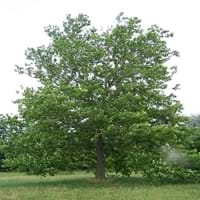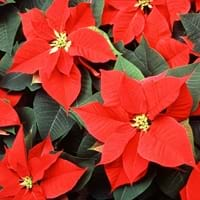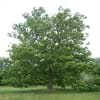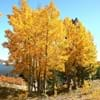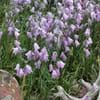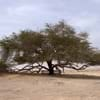Life Span
Perennial
Perennial
Origin
North America, Canada
Mexico
Types
North American sycamore, Middle Eastern sycamore ,The British sycamore
Prestige Red Poinsettiea, Snowcap White Poinsettia, Sparkling Punch Poinsettia, Enduring Pink Poinsttia
Habitat
bottomlands, Floodplains, Moist woods, Mountains
Forest edges, Tropical regions
USDA Hardiness Zone
5-9
9-15
Sunset Zone
1a, 1b, 2a, 2b, 3a, 3b, 4, 5, 6, 7, 8, 9, 10, 11, 12, 13, 14, 15, 16, 17, 18, 19, 20, 21, 22, 23, 24
H1, H2, 13, 16, 17, 18, 19, 20, 21, 22, 23, 24
Habit
Upright/Erect
Upright/Erect
Flower Color
Orange Red, Dark Salmon
Yellow, Red, Light Pink, Coral
Flower Color Modifier
Bicolor
Multi-Color
Fruit Color
Tan, Sandy Brown
Not Available
Leaf Color in Spring
Green, Light Green
Green, Dark Green
Leaf Color in Summer
Green, Dark Green
Dark Green
Leaf Color in Fall
Gold, Tan
Dark Green
Leaf Color in Winter
Not Available
Green, Dark Green
Leaf Shape
Orbicular
Bracts
Plant Season
Spring, Summer, Fall, Winter
Fall, Winter
Sunlight
Full Sun
Full Sun, Partial Sun
Growth Rate
Not Available
Medium
Type of Soil
Clay, Loam, Sand
Loam, Sand
The pH of Soil
Acidic, Neutral
Acidic, Neutral
Soil Drainage
Average
Well drained
Bloom Time
Spring
Late Fall, Early Winter, Winter
Tolerances
Wet Site, Pollution, Salt, Soil Compaction
Drought
Where to Plant?
Ground
Container, Ground, Pot
How to Plant?
Seedlings
Seedlings
Plant Maintenance
Medium
Medium
Watering Requirements
Needs more water during establishment, Needs Very high moisture
Keep the ground moist but not water-logged, Requires regular watering, Requires watering in the growing season
In Summer
Lots of watering
Lots of watering
In Spring
Moderate
Moderate
In Winter
Average Water
Average Water
Soil pH
Acidic, Neutral
Acidic, Neutral
Soil Type
Clay, Loam, Sand
Loam, Sand
Soil Drainage Capacity
Average
Well drained
Sun Exposure
Full Sun
Full Sun, Partial Sun
Pruning
Remove damaged leaves, Remove dead branches, Remove dead leaves
Do not prune during shooting season, Prune after flowering, Prune lower leaves, Prune to control growth, Requires little pruning
Fertilizers
All-Purpose Liquid Fertilizer
All-Purpose Liquid Fertilizer
Pests and Diseases
Anthracnose, Canker, Leaf spot, Powdery mildew
Bacterial Stem Rot, Botrytis Blight, Canker, Powdery mildew, Pythium rot, Rhizoctonia Root Rot
Plant Tolerance
Pollution, Salt, Soil Compaction, Wet Site
Drought
Flowers
Insignificant
Yes
Flower Petal Number
Single
Single
Foliage Texture
Coarse
Coarse
Foliage Sheen
Matte
Matte
Attracts
Birds, Not Available
Not Available
Allergy
breathing problems, Skin irritation
Eye irritation, Mouth itching, Skin rash, Stomach burn, Throat itching
Aesthetic Uses
Landscape Designing, Mixed Border, Showy Purposes
Beautification, Bouquets, Showy Purposes
Beauty Benefits
Not Available
Not Available
Environmental Uses
Air purification, Food for animals, Food for birds, Nesting sites for birds, Prevent Soil Erosion, Shadow Tree
Air purification
Medicinal Uses
Not Available
Fever, Pain killer, Tooth ache
Part of Plant Used
Bark, Flowers, Fruits, Sap
Flowers, Leaves
Other Uses
Animal Feed, Application in Furniture, Shelterbelt, Tea-like beverage can be brewed
Economic Purpose, Showy Purposes, Used as Ornamental plant
Used As Indoor Plant
Insignificant
Yes
Used As Outdoor Plant
Yes
Yes
Garden Design
Feature Plant, Landscape, Mixed Border, Shade Trees, Street Trees
Container, Feature Plant, Houseplant, Mixed Border, Tropical
Botanical Name
PLATANUS occidentalis
EUPHORBIA pulcherrima '490 Jingle Bells'
Common Name
American Planetree, American Sycamore, Eastern Sycamore, Buttonwood or Buttonball Tree
Poinsettia
In Hindi
अमेरिकी गूलर
Poinsettia
In German
Amerikanische Platane
Poinsettia
In French
Platanus occidentalis
Poinsettia
In Spanish
Platanus occidentalis
Poinsettia
In Greek
Platanus occidentalis
Αλεξανδρινό
In Portuguese
Platanus occidentalis
Poinsétia
In Polish
Platan zachodni
Poinsecja
In Latin
Platanus orientalis
Poinsettia
Phylum
Magnoliophyta
Anthophyta
Class
Magnoliopsida
Eudicotyledones
Order
Scrophulariales
Malpighiales
Family
Platanaceae
Euphorbiaceae
Clade
Angiosperms, Eudicots
Angiosperms, Eudicots, Rosids
Tribe
Not Available
Not Available
Subfamily
Not Available
Not Available
Season and Care of American Sycamore and Poinsettia
Season and care of American Sycamore and Poinsettia is important to know. While considering everything about American Sycamore and Poinsettia Care, growing season is an essential factor. American Sycamore season is Spring, Summer, Fall and Winter and Poinsettia season is Spring, Summer, Fall and Winter. The type of soil for American Sycamore is Clay, Loam, Sand and for Poinsettia is Loam, Sand while the PH of soil for American Sycamore is Acidic, Neutral and for Poinsettia is Acidic, Neutral.
American Sycamore and Poinsettia Physical Information
American Sycamore and Poinsettia physical information is very important for comparison. American Sycamore height is 2,130.00 cm and width 1,980.00 cm whereas Poinsettia height is 35.60 cm and width 45.70 cm. The color specification of American Sycamore and Poinsettia are as follows:
American Sycamore flower color: Orange Red and Dark Salmon
American Sycamore leaf color: Green and Light Green
Poinsettia flower color: Yellow, Red, Light Pink and Coral
- Poinsettia leaf color: Green and Dark Green
Care of American Sycamore and Poinsettia
Care of American Sycamore and Poinsettia include pruning, fertilizers, watering etc. American Sycamore pruning is done Remove damaged leaves, Remove dead branches and Remove dead leaves and Poinsettia pruning is done Do not prune during shooting season, Prune after flowering, Prune lower leaves, Prune to control growth and Requires little pruning. In summer American Sycamore needs Lots of watering and in winter, it needs Average Water. Whereas, in summer Poinsettia needs Lots of watering and in winter, it needs Average Water.
